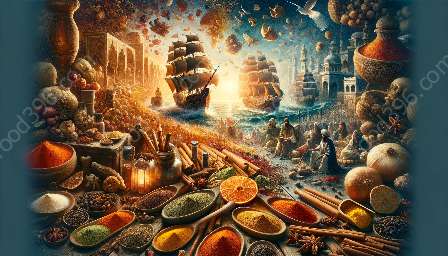European exploration and the spice trade have had a profound impact on the interconnectedness of global trade and have played a significant role in shaping the food culture and history of various regions. The history of spices and their trade is a fascinating journey that continues to influence culinary practices and cultural exchange. Let’s delve into this captivating topic, exploring the origins of the spice trade, the European quest for valuable spices, and the enduring legacy of this pivotal era.
The History of Spices and Their Trade
The use of spices dates back thousands of years, with early civilizations recognizing the value of these aromatic and flavorful substances. Spices were not only prized for their ability to enhance the taste of food but also for their medicinal properties, and they were often considered symbols of wealth and prestige.
By the 15th century, the demand for spices in Europe had intensified, leading to the exploration and trade that would reshape the world. European explorers sought new trade routes to directly access the spice-rich regions of Asia, leading to a period of great exploration and discovery.
European Exploration and the Pursuit of Spices
European powers, most notably Portugal and Spain, became instrumental in the Age of Discovery, with the goal of establishing direct trade links with the spice-producing regions of Asia. This era marked the beginning of an unprecedented period of global exploration, with navigators such as Vasco da Gama and Christopher Columbus charting new territories in search of coveted spices.
The spice trade played a pivotal role in motivating these explorations, driving advancements in navigation, shipbuilding, and cartography. The quest for spices led to the establishment of trade routes that connected distant lands, facilitating cultural exchange and the movement of goods and ideas across continents.
Impact on Food Culture and History
The spice trade significantly impacted food culture and history, introducing new flavors and ingredients to culinary traditions around the world. Spices such as cinnamon, cloves, and pepper became prized commodities, influencing the development of regional cuisines and creating new culinary fusions.
Furthermore, the exchange of spices contributed to the blending of diverse culinary practices, resulting in the creation of innovative dishes that reflected the cross-cultural interactions facilitated by the spice trade. This phenomenon not only enriched the culinary landscape but also transformed social customs and dietary habits.
Legacy of Spice Trade
The legacy of the spice trade endures in modern global trade and cultural exchange. The interconnectedness of the world, shaped in part by the pursuit of spices, continues to influence international relations, economic systems, and culinary diversity. The spice trade laid the foundation for the complex web of trade networks that underpin the modern global economy.
As we explore the history of spices and their trade, it becomes evident that this journey transcends mere commerce. It represents the interplay of civilizations, the resilience of human ingenuity, and the enduring impact of the exchange of goods and ideas on shaping the world as we know it. The European exploration and the spice trade stand as testament to the power of spice in connecting people, shaping cultures, and leaving an indelible mark on the tapestry of human history.

